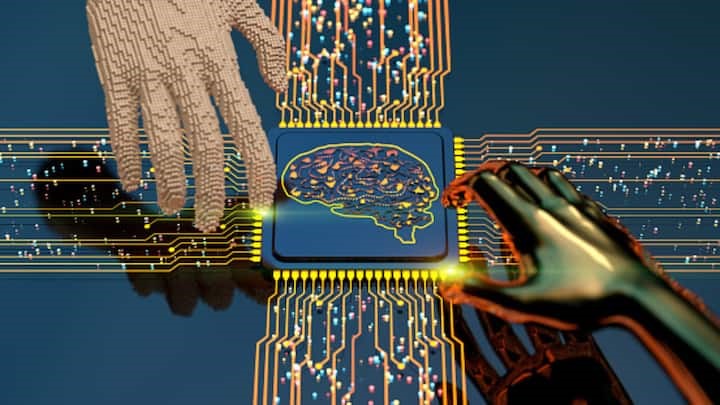Description

Disclaimer: Copyright infringement not intended.
Context
- The generative AI (GenAI) market has experienced an unparalleled surge, catapulting from $5.7 billion in 2020 to an astonishing $44.9 billion by 2023, marking an extraordinary 690% increase.
- This phenomenal growth underscores the escalating demand for generative AI technologies across various sectors.
Details
The Impact of OpenAI's ChatGPT
- A report from AltIndex.com predicts that the GenAI industry is on track to become a $100 billion behemoth by 2026, with a substantial 65% growth anticipated over the next two years.
- The report attributes this surge to the monumental impact of OpenAI's ChatGPT, which achieved the status of the fastest-growing app in history.
- With an impressive 100 million users within just two months of its release, ChatGPT played a pivotal role in elevating artificial intelligence to new heights in 2023.
- Looking ahead to 2030, industry projections suggest that the GenAI market will more than double, surpassing an impressive $207 billion.
Global Market Dynamics
- United States Dominance: The United States is poised to maintain its position as the largest GenAI market, with a projected value of $37.3 billion in 2026, reflecting a substantial 60% increase compared to the current year.
- China's Accelerated Growth: China, as the second-largest market globally, is expected to experience even more significant growth, with its GenAI market valuation soaring by 72% to reach $14.7 billion in the next two years.
- German Market Dynamics: The generative AI market in Germany is anticipated to see a 60% increase over the next two years, reaching a valuation of $4.5 billion by 2026.

About Gen AI
- Generative Artificial Intelligence (AI) represents a transformative leap in machine learning, enabling systems to create original content, ranging from text to images and beyond.
Foundational Principles:
- Generative Models: Generative AI is based on generative models that aim to learn the underlying patterns of data and generate new instances that resemble the original input.
- Neural Networks: Deep learning, a subset of machine learning, plays a crucial role in generative AI. Neural networks, particularly Generative Adversarial Networks (GANs) and Variational Autoencoders (VAEs), are fundamental architectures.
- Training Data: Generative AI requires large datasets for training, allowing models to capture intricate patterns and nuances, ensuring diverse and high-quality output.
Key Algorithms:
- Generative Adversarial Networks (GANs): GANs consist of a generator and a discriminator, engaged in a continuous adversarial process. The generator creates content, and the discriminator evaluates its authenticity. This iterative feedback loop refines the generator's ability to create realistic output.
- Variational Autoencoders (VAEs): VAEs focus on encoding input data into a probabilistic distribution. This distribution is then sampled to generate new, similar instances. VAEs introduce a probabilistic element, enabling controlled and diverse outputs.
- Recurrent Neural Networks (RNNs) and Transformers: For sequential data generation, such as text, RNNs and Transformers are employed. RNNs maintain context over time, while Transformers excel in capturing long-range dependencies.
Applications:
- Art and Creativity: Generative AI has revolutionized the art world, producing unique paintings, music compositions, and even poetry. Artists collaborate with AI systems to explore new realms of creativity.
- Content Generation: In content creation, from writing articles to generating marketing copy, generative AI automates the process, enhancing efficiency and creativity.
- Image Synthesis: StyleGAN, a GAN variant, has demonstrated exceptional capability in synthesizing highly realistic images, leading to applications in video game design, fashion, and virtual environments.
- Drug Discovery: Generative models contribute to drug discovery by predicting molecular structures and simulating potential drug candidates, accelerating research in pharmaceuticals.
Ethical Considerations:
- Bias and Fairness: Generative AI systems can inadvertently inherit biases present in training data, raising concerns about fairness and potential discrimination in generated content.
- Misinformation and Deepfakes: The ability to generate realistic content also brings the risk of malicious use, such as creating deepfake videos or spreading misinformation.
- Ownership and Attribution: The question of who owns generated content and how to attribute authorship poses legal and ethical challenges, especially as AI systems contribute to creative outputs.

Conclusion
Generative AI stands at the forefront of innovation, pushing the boundaries of what machines can create. While unlocking unprecedented possibilities in art, content generation, and scientific research, it demands careful consideration of ethical implications and ongoing efforts to refine its capabilities. As generative AI continues to evolve, its impact on various industries and creative endeavors is poised to reshape the landscape of human-machine collaboration.
|
PRACTICE QUESTION
Q. The exponential growth of the generative AI market, fueled by innovations like ChatGPT, showcases the increasing importance and adoption of AI technologies worldwide. Examine. (250 Words)
|
















